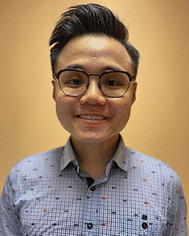Materials Horizons Emerging Investigator Series: Professor Edison Huixiang Ang, National Institute of Education/Nanyang Technological University, Singapore
Abstract
Our Emerging Investigator Series features exceptional work by early-career researchers working in the field of materials science.
Edison Huixiang Ang earned his PhD from Nanyang Technological University (NTU) in 2017. Following this, he conducted postdoctoral research at both the National University of Singapore and NTU and was a visiting scholar at the Technical University of Munich, Germany. Currently, he serves as an assistant professor at the National Institute of Education (NIE)/NTU. He holds editorial roles at several esteemed journals including the Chemical Engineering Journal, Journal of Energy Chemistry, Carbon Energy, and Materials Horizons. Additionally, he is an associate editor for Scientific Reports and Frontiers in Chemistry. Ang has received numerous awards, including the PhotonIcs and Electromagnetics Research Symposium (PIERS) Young Scientists Award, American Institute of Chemical Engineers (AIChE) Singapore Local Section (SLS) Young Faculty Award, NIE/NTU Excellence in Research Award, Singapore National Institute of Chemistry (SNIC) Early Career Research Award, and the Sabic Young Professional Award. His research integrates nanotechnology, 2D nanomaterials, and additive manufacturing to advance energy storage, membrane technology, catalysis, and sensing applications. For more details, please visit his homepage at https://www.edisonangsg.com/
Read Edison Huixiang Ang’s Emerging Investigator Series article ‘Construction of phase-separated Co/MnO synergistic catalysts and integration onto sponge for rapid removal of multiple contaminants” ( https://doi.org/10.1039/D4MH00285G ) and read more about him in the interview below:
MH: Your recent Materials Horizons Communication focuses on developing metallic Co integration onto MnO nanorods (MON) resulting in a phase-separated synergetic catalyst. How has your research evolved from your first article to this most recent article and where do you see your research going in future?
EA: My research has evolved significantly since my first article. Initially, I was exploring the fundamental science behind the interactions between different nanomaterials, but now I’m diving deep into creating catalysts that have practical applications, like wastewater treatment. In the future, I hope to continue refining these catalysts to make them even more efficient and sustainable.
MH: What aspect of your work are you most excited about at the moment?
EA: I’m particularly enthusiastic about the practical implications of our new catalysts in tackling real-world environmental issues. Witnessing how these catalysts perform in actual settings and their direct impact on improving water treatment efficiency is tremendously fulfilling and motivates my ongoing research efforts.
MH: In your opinion, what are the most important questions to be asked/answered in this field of research?
EA: A crucial question is how to optimize catalysts to achieve both high efficiency and environmental sustainability. Additionally, understanding the long-term ecological impacts of these materials once they are scaled up for practical use is paramount. Balancing effectiveness with environmental stewardship is key to advancing this field responsibly.
MH: What do you find most challenging about your research?
EA: One of the greatest challenges is bridging the gap between theoretical advancements in the lab and their practical implementation in real-world conditions. Ensuring that our catalysts perform consistently and effectively outside controlled environments remains an ongoing challenge that requires iterative experimentation and innovation.
MH: In which upcoming conferences or events may our readers meet you?
EA: I will be attending the American Chemical Society (ACS) Fall in August at Denver. I look forward to engaging with fellow researchers, exchanging ideas, and exploring potential collaborations at these events.
MH: How do you spend your spare time?
EA: Outside of research, my personal interests are in playing basketball and watching Netflix shows, I also dedicate time to creating educational content on YouTube through my channel, EAversity. On this platform, I produce videos that explain scientific concepts and showcase practical applications in my field, aiming to make complex topics accessible to a wide audience. Through these efforts, I strive to inspire curiosity about science, promote scientific literacy, and contribute to science communication by reaching diverse viewers and fostering a greater understanding of research and innovation’s role in addressing global challenges.
MH: Can you share one piece of career-related advice or wisdom with other early career scientists?
EA: Embrace risk-taking and explore unconventional ideas. Some of the most groundbreaking discoveries arise from daring to challenge established norms and think innovatively. Additionally, cultivating a strong network of mentors and collaborators is invaluable. They offer guidance, support, and diverse perspectives that can significantly accelerate personal and professional growth throughout your career journey. Building these relationships is essential for navigating the complexities of scientific research and development effectively.
| This journal is © The Royal Society of Chemistry 2024 |

